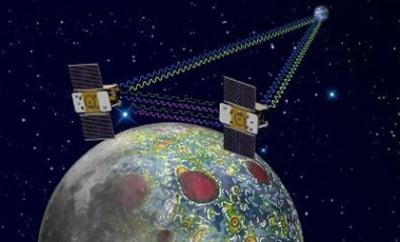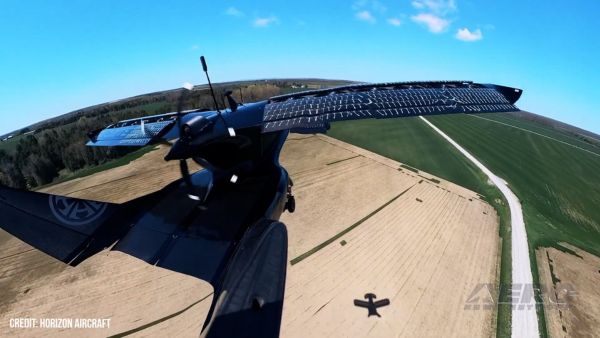Inspiration Came From GRAIL's Study Of Gravity
Twin NASA spacecraft that achieved orbit around the moon New
Year's Eve and New Year's Day have new names thanks to elementary
students in Bozeman, Montana. Their winning entry, "Ebb and Flow,"
was selected as part of a nation-wide school contest that began in
October 2011. The names were submitted by fourth graders from the
Emily Dickinson Elementary School. Nearly 900 classrooms with more
than 11,000 students from 45 states, Puerto Rico and the District
of Columbia, participated in the contest. Previously named Gravity
Recovery And Interior Laboratory, or GRAIL A and B, the washing
machine-sized spacecraft begin science operations in March.

"The 28 students of Nina DiMauro's class at the Emily Dickinson
Elementary School have really hit the nail on the head," said Maria
Zuber, GRAIL principal investigator from the Massachusetts
Institute of Technology. "We were really impressed that the
students drew their inspiration by researching GRAIL and its goal
of measuring gravity. Ebb and Flow truly capture the spirit and
excitement of our mission."
Zuber and Sally Ride, America's first woman in space and CEO of
Sally Ride Science in San Diego, selected the names following the
contest, which attracted 890 proposals via the Internet and mail.
The contest invited ideas from students ages 5 to 18 enrolled in
U.S. schools. Although everything from spelling and grammar to
creativity were considered, Zuber and Ride primarily took into
account the quality of submitted essays. "With submissions from all
over the United States and even some from abroad, there were a lot
of great entries to review," Ride said. "This contest generated a
great deal of excitement in classrooms across America, and along
with it an opportunity to use that excitement to teach
science."

GRAIL is NASA's first planetary mission carrying instruments
fully dedicated to education and public outreach. Each spacecraft
carries a small camera called GRAIL MoonKAM (Moon Knowledge
Acquired by Middle school students). Thousands of students in
grades five through eight will select target areas on the lunar
surface and send requests for study to the GRAIL MoonKAM Mission
Operations Center in San Diego. The winning prize for the Dickinson
students is to choose the first camera images. Dickinson is one of
nearly 2,000 schools registered for the MoonKAM program, which is
led by Ride and her team at Sally Ride Science in collaboration
with undergraduate students at the University of California in San
Diego. "These spacecraft represent not only great science but great
inspiration for our future," said Jim Green, director of NASA's
Planetary Science Division in Washington. "As they study our lunar
neighbor, Ebb and Flow will undergo nearly the same motion as the
tides we feel here on Earth."
Launched in September 2011, Ebb and Flow will be placed in a
near-polar, near-circular orbit with an altitude of about 34 miles
(55 kilometers). During their science mission, the duo will answer
longstanding questions about the moon and give scientists a better
understanding of how Earth and other rocky planets in the solar
system formed. (Images provided by NASA)
 Aero-News: Quote of the Day (05.25.25)
Aero-News: Quote of the Day (05.25.25) Classic Aero-TV: Efficient Versatility -- NASA GL-10 Greased Lightning
Classic Aero-TV: Efficient Versatility -- NASA GL-10 Greased Lightning NTSB Prelim: Cessna 525
NTSB Prelim: Cessna 525 Klyde Morris (05.23.25)
Klyde Morris (05.23.25) Airborne-NextGen 05.20.25: Drone Regs, Zero-Emission Cargo, Door-Dash Drone
Airborne-NextGen 05.20.25: Drone Regs, Zero-Emission Cargo, Door-Dash Drone




